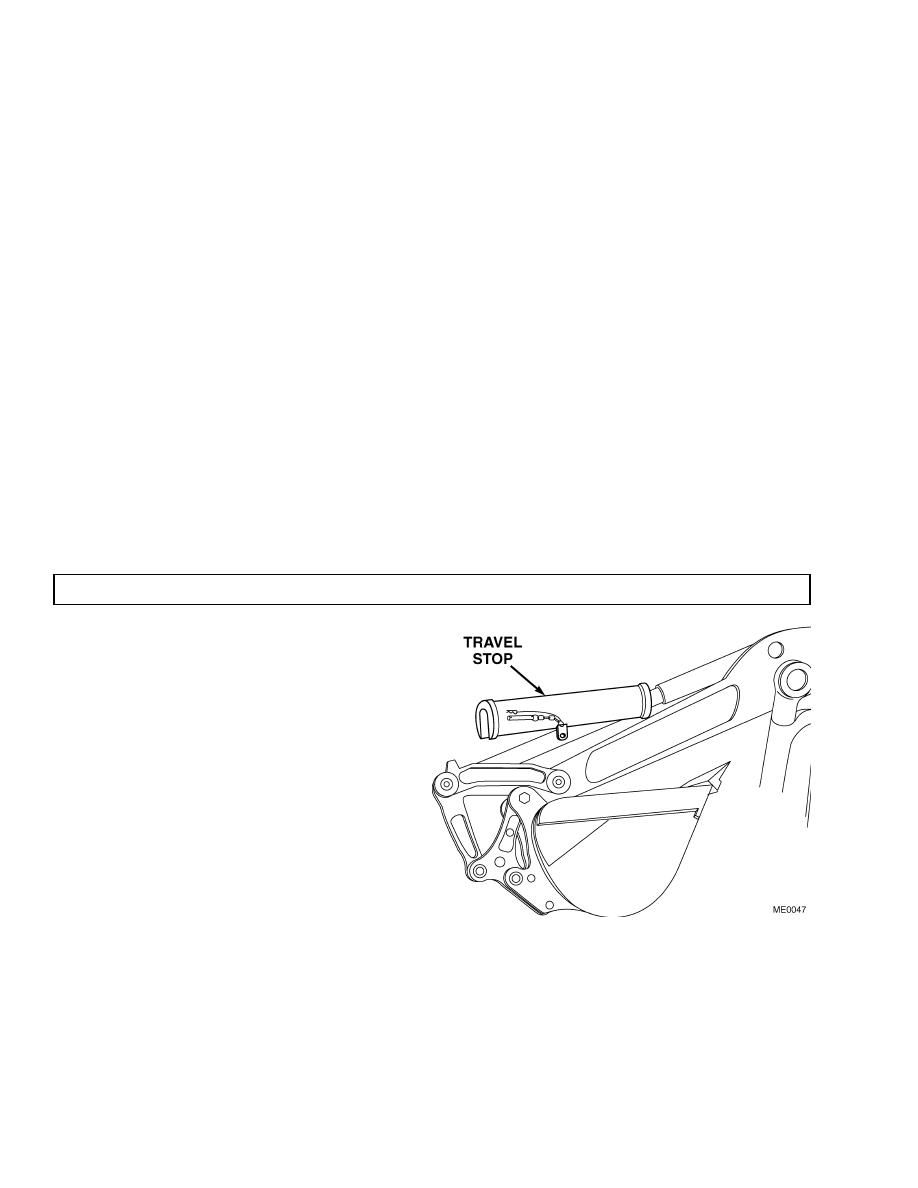
TM 5-2420-230-10
(7)
The backhoe selector switch allows the operator to select one of three different operating modes:
(a)
Mode 1 - Fine Mode. This mode provides the maximum amount of control of the backhoe by changing the
ratio between movement of the joystick and movement of the backhoe. In this mode, 100 percent movement
of the joystick corresponds to 40 percent of the backhoe's maximum speed. This mode is recommended for
precision work such as positioning pipes.
(b)
Mode 2 - Smooth Mode. This mode provides the maximum amount of control of the backhoe with the first
half of the joystick movement, while the second half of the joystick movement controls the backhoe at
maximum speed. This mode selection is recommended for work requiring a combination of speed and
precision.
(c)
Mode 3 - Normal Mode. For this mode, the ratio between movement of the joystick and movement of the
backhoe is approximately equal: 50 percent movement of the joystick gives 50 percent of the backhoe
working speed, and 90 percent movement of the joystick gives 100 percent of the backhoe maximum
working speed. This mode is recommended whenever speed is an important factor.
b. Diagnostic Mode.
A self-test device in the electronic control box indicates the presence and location of a malfunction in the system. This
mode is used to assist in locating faults in the electrical system. The test device checks the condition of all wiring and
detectors that are connected to it, in addition to its own internal electronic logic. Diagnostics are coded by the flashing of
the loader indicator and the backhoe indicator located on the left joystick console. Notify Unit maintenance.
To prevent backhoe bucket movement while in raised
travel position, a backhoe travel stop is provided. To
install this travel stop to the dipper hydraulic cylinder,
complete the following steps:
(1)
Place backhoe bucket in raised travel
position.
(2)
Place travel stop over hydraulic cylinder
shaft.
(3)
Secure travel stop to backhoe arm with
securing pin assembly.
(4)
Removal is the reverse of the installation
procedure.

